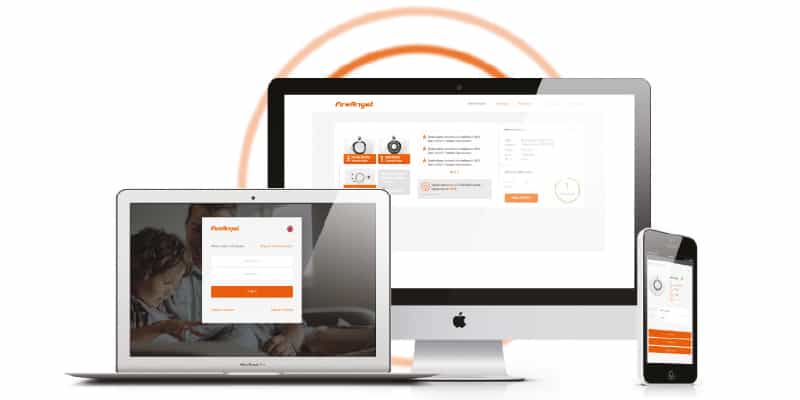A proactive approach to Fire and CO risk management
The Regulator of Social Housing’s third temporary monthly survey found that gaining physical access to properties remained a concern for housing providers across the UK due to the risks posed by the pandemic.
Nick Rutter, FireAngel’s chief product officer, explores how connected and cost-effective fire safety solutions that facilitate remote real-time monitoring can not only overcome the potential issues posed by failing to gain physical access to a property, but also provide a compliant and future-proofed approach to asset and risk management across an entire housing portfolio that safeguards every resident.
As essential works recommence after five months’ disruption, housing providers face the challenge of understanding the level of risk each resident and property now poses, particularly regarding to fire safety.
Since March 2020, contractors’ ability to gain access to a property to conduct necessary maintenance checks and repairs was significantly reduced while many vulnerable and elderly residents shielded from the virus and refused other people into their homes.
Repairs’ backlog
As contractors now work to overcome the backlog of repairs and complete a build-up of necessary maintenance checks, concerns are focused on ensuring the safety and wellbeing of both them and residents to mitigate any potential spread of the virus.
This is combined with the ever-present threat of the rate of infection rising, which would once again place an immediate and substantial halt on essential maintenance due to the inability for contractors to gain physical access to a property and potentially increase the fire risk level for some residents.
So, how can housing providers think ahead to overcome access and maintenance issues, successfully future-proof installations and gain a better understanding of the levels of fire risk in their portfolio?
In short, remote real-time monitoring.
Remote monitoring capabilities are not only offering a wide range of benefits for existing housing portfolios, they are also transforming the future of fire safety and paving the way for a new generation of digital developments in housing that place IoT at the core of their construction.
Real-time monitoring
The activation of a connected cloud-based gateway allows instant remote real-time monitoring of Smart RF smoke, heat and carbon-monoxide (CO) alarms, enabling housing providers to achieve full traceability, audit and compliance across their entire housing portfolios by simplifying the monitoring of alarm networks across every property.
Through a connected system, such as FireAngel Predict technology, providers can further futureproof and enhance their fire and CO protection by receiving an overview of fire risk across the entire property portfolio to help pinpoint increasing risk levels and enhance overall efficiency. This subsequently supports a long-term reduction in overheads as assets are applied in the most efficient way.
Connected gateways
Through the use of a connected gateway, providers can also activate instant access to vital information including alarm diagnostics for every alarm across the network to ensure 24/7 legislative compliance, whilst FireAngel’s patented Predict technology automatically provides the ability to pinpoint and manage risk remotely. Properties are also future-proofed against potential regulatory changes as the system offers the ability to be adapted at a later date to meet changes in resident risk.
The ability to view the performance of each alarm in real time also aids proactive asset maintenance as housing providers can adopt a targeted approach to the application of resources, subsequently simplifying fire risk management. Providers have instant access to vital information from every alarm across each property, including current status, history, replacement dates and network health.
Hybrid networks and IoT
The system also delivers complete freedom to accommodate a hybrid network, which supports the specification of mains- and battery-powered alarms in the same property. This optimises the use of existing wiring for mains alarms, while the ease of installation of battery-powered alarms offers cost and resource savings by reducing the amount of time a contractor spends inside the property.
As connected technology continues to pave the way for fire safety, housing providers can benefit from IoT and connected fire-safety technologies such as Predict, which uses artificial intelligence to bridge the gap in communication between a property and its residents.
The social housing sector has the opportunity to take an alternative approach to the fire safety installed in future properties by procuring intelligent connected solutions that offer the ability to be cost-effectively upgraded and adapted at a later date to meet the individual needs of each resident. This can be achieved by using a connected fire safety system that features our Predict technology.
Artificial intelligence
This AI-driven approach can provide an automatic stratification of risk across an entire housing portfolio, saving providers valuable time and money, while also ensuring compliance with current and future legislation to deliver residents with the highest levels of fire and CO protection.
As the pandemic continues to have a significant impact, social housing providers should take an alternative approach to the provision of fire-safety solutions to successfully streamline their asset management through the facilitation of remote real-time monitoring.
For more information on how FireAngel’s extensive range of connected fire-safety solutions can suit your housing portfolio, please visit fireangel.co.uk/connect.
Nick Rutter is the chief product officer for FireAngel.


